Unleash the POWER of the F 4 Phantom: A Thrilling Ride Awaits!
Stand Alone Freeware Mod – No LONGER AVAILABLE in 2025!
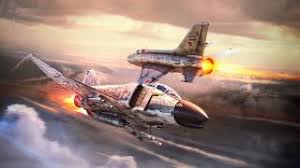
The F 4 Phantom was the Premiair air combat platform for many countries in the 1960s & 70s. It became the west’s most powerful air superiority fighter for many years until the advent of the F-15 Eagle. Operated by the USA, Japan, Australia and others, this mighty twin-engine fighter needed two crew to operate it effectively.
The Phantom II came with all new highly complex weapons systems and sensors. Download and discover the power of this DCS World standalone freeware version of this iconic aircraft. In this blog we will look at its history, performance and weapons systems so you can dive in and be effective in combat. Experience air combat in this legendary aircraft today after reading and getting excited about this monster of a fighter.
F 4 Phantom 2 Operators.
The McDonnell Douglas F 4 Phantom II was operated by several countries around the world. It was a versatile and widely used aircraft, primarily serving as a fighter and interceptor but also adapted for various other roles, including reconnaissance and ground attack. Here is a list of some of the countries that operated the F-4 Phantom:
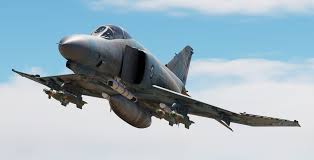
- United States: The United States was the primary operator of the F-4 Phantom II, with the U.S. Air Force and U.S. Navy both using different variants of the aircraft. The U.S. Marine Corps also operated F-4s for a time.
- United Kingdom: The United Kingdom’s Royal Air Force (RAF) and Royal Navy operated the F-4 Phantom II under the designation “Phantom FG.1” for the RAF and “Phantom FGR.2” for the Royal Navy.
- Germany: West Germany (before reunification) operated the F-4 Phantom II, and it was a key component of the Luftwaffe.
- Japan: The Japan Air Self-Défense Force (JASDF) operated the F-4EJ Phantom II, a variant of the aircraft built under license in Japan.
- Israel: The Israeli Air Force (IAF) used the F-4 Phantom II extensively and customized it to suit their needs. The Israeli F-4s were involved in various conflicts.
- Greece: The Hellenic Air Force Operated F-4 Phantom II aircraft.
- Iran: Prior to the Islamic Revolution in 1979, the Imperial Iranian Air Force (IIAF) had a significant number of F-4 Phantoms in its inventory.
- Turkey: The Turkish Air Force Operated F-4 Phantom II aircraft for many years.
- South Korea: The Republic of Korea Air Force (ROKAF) used the F-4 Phantom II.
- Spain: The Spanish Air Force (Ejercito del Aire) operated the F-4C Phantom II.
- Australia: The Royal Australian Air Force (RAAF) operated the F-4E Phantom II.
- Egypt: The Egyptian Air Force used the F-4 Phantom II in various conflicts.
- Iran (Islamic Republic of): After the Islamic Revolution, Iran continued to operate some of the F-4 Phantoms inherited from the previous regime.
These are just some of the countries that operated the F-4 Phantom II. It was a widely exported and versatile aircraft that served in numerous air forces around the world during its operational lifetime.
Today we can experience the might and awesome power of the F4 Phantom B/C with the amazingly good DCS World (Stand Alone) freeware mod by VSN. If your keen to strap on your helmet and head to Mig alley, then you can download the mod at the bottom of this blog.
- Joystick / HOTAS – AMAZON.com
- Rudder Pedals – AMAZON.com
- Throttle Quadrant – AMAZON.com
- Gaming Chair – AMAZON.com
- VR Headset – AMAZON.com
F-4 Phantom II Performance Overview.
The F 4 Phantom II is a famous American fighter jet that was in service from the 1960s through the 1990s, and it was used by several branches of the U.S. military. The F-4 had several variants, including the F-4B and F-4C. Here’s a basic overview of the specifications for these variants:
F-4B Phantom II:
- Role: Fighter/Interceptor
- Crew: 2 (Pilot and Radar Intercept Officer)
- Length: Approximately 58 feet (17.73 meters)
- Wingspan: Approximately 38 feet (11.7 meters)
- Maximum Take-off Weight: Approximately 58,000 pounds (26,308 kilograms)
- Maximum Speed: Mach 2.2 (around 1,450 mph or 2,334 km/h)
- Range: Approximately 1,750 miles (2,816 kilometres)
- Engine(s): Two General Electric J79-GE-8A turbojet engines
- Armament: Varied depending on mission, but it typically included air-to-air missiles, air-to-ground missiles, and a cannon.
F-4C Phantom II:
- Role: Fighter/Interceptor
- Crew: 2 (Pilot and Radar Intercept Officer)
- Length: Approximately 58 feet (17.73 meters)
- Wingspan: Approximately 38 feet (11.7 meters)
- Maximum Take-off Weight: Approximately 58,000 pounds (26,308 kilograms)
- Maximum Speed: Mach 2.2 (around 1,450 mph or 2,334 km/h)
- Range: Approximately 1,750 miles (2,816 kilometres)
- Engine(s): Two General Electric J79-GE-15 turbojet engines
- Armament: Similar to the F-4B, with a mix of air-to-air and air-to-ground missiles, as well as a cannon.
Both the F-4B and F-4C variants of the Phantom II played significant roles in the U.S. military during the Vietnam War and the Cold War era. They were known for their speed, versatility, and ability to carry a variety of weapons for different mission profiles. These specifications are just a basic overview, and the exact configuration and capabilities of individual aircraft could vary based on upgrades and modifications.

Flying this mighty jet, you need to know some of its performance parameters to max perform this amazing jet. These Energy Manoeuvrability diagrams (EM)were created by Col John Boyd who created the whole energy manoeuvrability doctrine which created the mighty F-15 as well as the F-16 Viper plus I’m sure every fighter since. These diagrams show you the ability of an aircraft to turn in a fight.
It must be remembered that these diagrams are only correct under specific circumstances accounting for weapons load, weight, altitude and drag characteristics. Changing these will modify the diagram considerably in some situations. In an Air-to-Air configuration we can see the maximum turn rate which is the Instantaneous Turn Rate (Not able to be sustained) is at 480 knots @ 7.0 G load limit (Structural Limit is 7.5G). Follow the line point at the top of the diagram and go down to see speed and across to see G available in an instantaneous turn!
The F4 Phantom B/C Model: A History Overview.
The F4 Phantom B/C Model: A Comprehensive Overview
History: The F4 Phantom B/C Model, an iconic fighter-bomber aircraft, first took flight in 1958. It was designed by McDonnell Aircraft and later manufactured by McDonnell Douglas. This versatile aircraft served with distinction for several decades, undergoing numerous upgrades during its operational lifespan. Performance: The F 4 Phantom boasted impressive performance capabilities. Powered by twin General Electric J79 engines, it could achieve speeds exceeding Mach 2 and operate at altitudes of up to 60,000 feet.
Its range allowed for both short-range dogfights and long-range strategic missions.

Weapons: The F4 Phantom was equipped with a wide array of weapons, including air-to-air missiles like the AIM-7 Sparrow and AIM-9 Sidewinder, as well as a variety of air-to-ground munitions, making it a formidable multi-role aircraft. Operators: The F4 Phantom was operated domestically by the United States Air Force (USAF), United States Navy (USN), and United States Marine Corps (USMC). Additionally, it served in the air forces of many other nations, becoming a globally recognized aircraft.
Primary Mission: The primary mission of the F4 Phantom was air superiority and ground attack. It was designed to engage enemy aircraft in dogfights and deliver precision strikes against ground targets, demonstrating its versatility on the battlefield. Kill-to-Loss Ratio: The F4 Phantom proved its mettle in air-to-air combat during the Vietnam War.
While the kill-to-loss ratio varied depending on the specific engagement and tactics employed, it achieved an impressive overall ratio, often exceeding 3:1 in favor of the Phantoms. The F4 Phantom B/C Model’s history is a testament to its adaptability and effectiveness in both domestic and combat operations, solidifying its place in aviation history as an enduring symbol of military excellence.
F4 Phantom B/C Models
The F4 Phantom Mod offered by VSN is extremely well made with quality models and cockpit recreations. Externally the quality of the model is very good at a freeware mod level. It should not be compared with the soon to be released Heatblurr F4E which is highly anticipated by the DCS World cold war community. The cockpit is partly clickable with weapons systems and a few others modelled. The instruments are good quality, and all look clear in the model.
The F4 Phantom variants are still quite early in the development of the F4 being a US Navy B model and F 4 C USAF model with subtle differences between them such as the ability to carrier land and launch on the B model. Weapons choices are great for most situations, but the obvious important part missing is the internal M61 Gatling gun that was reintroduced in the D model. The Phantoms often found themselves in close quarters with a range of Mig fighters not being able to employ their AIM-7 Sparrow semi active missiles at distance as was the designer’s intention.
Due to political guidelines at the time the US government showed excessive caution not wanting Chinese jets to get shot down if they strayed into the arena and escalate the conflict. So US pilots had to visually ID all targets unless confirmed by an AWACS to be a hostile bandit which did occur occasionally according to a F4 pilot in a recent podcast.
F4 Phantom B/C Weapons (VSN Freeware Mod)

There are a range of Sidewinder missiles from the Bravo B and P (Papa) models with later more advanced Lima 9Ls also included with the VSN freeware mod. All missiles were generally quite unreliable at the time as they were not built with constant fitments and removals from jets if not used. This is very common on fighter squadrons as an ex-RAAF weapons/egress tech I can attest to moving missiles around regularly. The weather also made the new missiles unreliable according to reports with the high humidity in Vietnam causing many failures as well.
No Internal Gun!
The answer to the gun issue came in a M61 gun pod fitted to the centreline fuselage pylon. This was not as accurate as an internal installed weapon but did the job and allowed both air to air and air to ground gun attacks. With 4000/6000 rounds per minute of 20mm high explosive or high explosive incendiary the damage is going to be extensive.
This was a reasonable but less than ideal answer to the question. The F4 was also very often used in bombing missions as well as close air support (CAS) where the use of bombs, rockets, cluster munitions and the gun were employed.

The F4 Phantom VSN Freeware mod has a selection of weapons for air to ground targeting but are somewhat limited in nature. The 500Lb and laser guided bombs are available but in the case of LGBs which are available you will need a designator on the ground, which was often used, or airborne designation which is historically accurate for the time. Simple 2.75-inch rocket pods were also available and excellent against ground targets.
Lets Go SEAD (Suppression of Enemy Air Defences)
The Phantom has Anti radar options if your keen to show your chin and then duck the punch by a SA2/SA3 Surface to air missile as well as Radar Guided Gun systems. You can send some love with the Shrike missile under your wing as well as some bombs and of course the gun should you desire to get that close.
This missile requires the radar to remain on to be effective and often radar operators in the SA-2 & SA-3 surface to air systems would turn of their radars and the missile would miss! What’s important to remember regarding these missions is that the SEAD mission requires your strike force gets through unscathed to the target first and foremost. This is regardless of you just trying to kill missile systems.
Your mission is not just making kills on SAM sites, if the escort group gets through because the SAM radars were off and SAMs were not launched that’s a win too! Its all about perspective my Phantom fighter pilots.

F-4 Phantom Flight Model (VSN – Stand Alone – Freeware Mod)
Flying the VSN (standalone) Freeware mod F4 Phantom has been a pleasure but if your use to F-16/F-18 fighters and not flown older jets you’re going to have to get use to trimming the aircraft constantly. This can be tiresome when trying to lock air to air targets and rapidly changing speed. As you increase speed the aircraft will tend to want to climb with the additional airflow over the wings.
This requires you to trim nose down to maintain level flight. As you slow down again you will notice the nose of the F-4 Phantom starting to drop below the horizon. Again, you will need to trim nose up to maintain your desired attitude.
Performing the F4 Phantom at its best by flying around 480 Knots and 10 to 12 units of AOA, this is so you won’t bleed energy quickly. Keeping your speed up at all times is super necessary to survive air combat and the big Phantom engines can help you do this. The Phantom is not an aircraft you want to slow fight with a Mig is for sure. The Mig 15/17/19 and even the Mig-21 apparently had better level turning abilities than the Phantom.
Your safety is the ability to out climb with those massively powerful engines taking you vertically away from your enemy and allowing you to come back on top of them and kill with missiles or the gun. In a recent interview I saw from the last USAF ACE in history, there has not been one since so he’s special said he never level turned with a Mig! It was about climbing up and coming down on them or cutting across the circle with a shallow dive then pull up behind the enemy jet.
Ensuring your max performing the aircraft you will defiantly need to keep an eye on the AOA indicator next to the gun sight. This has a GREEN line and not exceed the RED line within the AOA indicator. This will cause you to bleed your speed with that bug fuselage and big wings so keep a constant eye on it to max perform the jet. You can achieve around 7.5 Gs in a turn but again watch the AOA and speed to stay offensive and alive!


F 4 Phantom Spin – It Bites So Be Careful!
Flying the VSN F-4 Phantom has been a lot of fun but also frustrating at times as I’ve been learning it. I am still at the beginning of the journey and now looking forwards to trying the Hearblurr Simulations model when its released. Having a Weapons Systems Officer (WSO) in that model should be a new experience with the lessons learnt from the F-14 Jester WSO but for now it’s not available for the freeware mod.
So, max performing the aircraft is not super hard but exceeding the envelope is also not as hard as you think and getting into a flat spin has happened to me a few times now. Just don’t get slow is the real answer but in low level combat with Migs vying for angles for a missile or gunshot the inevitable will happen so be ready.
The great part of the aircraft’s flight model is it talks to you to a point. As in the Hearblurr F-14 you get visible buffeting which is saying “BACK OFF DUDE! You’re pulling to hard and I’m going to kill you if you DON’T STOP!” This starts at 14/15 units of AOA so again keep an eye on the meter. Relax a little to keep control! If you get to a higher AOA and control is becoming an issue you need to use rudder to assist in rolling the aircraft.
SPIN RECOVERY Technique
The spin in this aircraft is extremely violent and recovery in this DCS Freeware Mod is challenging. With these steps there is a good chance you can recover if you have the altitude to do so otherwise EJECT EJECT EJECT. I believe any F-4 in a spin requires the Aircrew to eject if not recovered by 10,000 FT.
- Aileron NEUTRAL
- STICK FORWARD of CENTRE
- POWER to IDLE
- BRAKE CHUTE DEPLOY!
Below is a training video you may find helpful in either the VSN and upcoming Heatblurr F-4 Phantom models on flying and recovering the Phantom.
Adverse Yaw is a subject all pilots need to understand, even in-flight sims because it will allow you to fly your aircraft safer and understand things the aircraft may do! Adverse yaw happens often in a turn where rudder is added in the direction if the turn often to hopefully increase the rate it is occurring. This kills real world pilots every month and we see it often in crash videos in smaller GA aircraft.
When you’re turning left with a medium roll held and then add left rudder in an attempt to increase the rate which often happens when pilots overshoot the centreline on landing. The result is the outward wing although traveling faster than the inner one also exceeds the AOA limitation and stalls. The result is the aircraft roll uncontrollably away from the turn and often ends up in a flat spin! So as per the video at high AOA rudder needs to be used to maintain control but be careful.
Personal Flying Experience – VSN F 4 Phantom 2
In flying the F 4 after being pretty much a F-18 & F16 guy flying in DCS I feel like I’m warming to this big bucket of powerful bolts. Its flying characteristics are pretty nice and now having flown a load of training missions against Migs and others within the DCS World Editor I’m pretty happy with my progress.
The handling of the aircraft has some quirks that you should be aware of when max performing the aircraft so Ill mention what I’ve experienced so far. Generally, it flies very well and is responsive to inputs plus easy to exceed the AOA limits, so this takes time and some feel to get used to. Departing the aircraft initially happened to me to many times and personally frustrated me enormously. It is not the aircraft as much as the pilot we have all heard and this remains true.

You don’t have a bunch of sensors and computers stopping you from doing something stupid and departing the Phantom from flight. It is truly unforgiving if you do so and even though I’ve flown real aircraft (GA) and experienced a lot of Gs in real world fighters and jet trainers in my Airforce days. Nothing I have done has saved the aircraft yet once it loses its mind in a spin. It just seems to accelerate the rotation! Time will tell if it can be recovered so ill add to this if I find it can.
Max performing the aircraft is a real pleasure if you follow the EM diagrams guidance above. Ensure you have 480 knots of airspeed and smoothly pull back on the stick to achieve the GREEN line at 12 units of AOA on the meter. Remember the AOA meter is both next to the gun sight and also down on the main panel. The aircraft will hold the 7Gs and turn pretty well. You can hold this till your blacking out so keep that HICK Manoeuvre happening (quietly so your kids don’t worry your having a heart attack!), and ease when you have to!
Max performing the jet has some issues when your right on the buffet, the aircraft shaking because its close to stall. This next bit of info comes from real world fighter pilots from the F 4 ok so listen. When your pulling hard and your max performing the jet and decide to roll and change direction DO NOT use the ailerons! Use the RUDDER instead because the aircraft often enters ADVERSE YAW conditions, and it will flick the opposite way to your requested aileron roll and probably spin you into the ground!
I know many reading this are going to want the finer details so I found a great video from the training archives all about F-4 Phantom II Handling so feel free to grab a coffee and put your feet up with a notepad if you wish and take notes on how to be a great Phantom Pilot.
Unfortunately Since the Release of the HEATBLUR F-4 in 2024 it has been removed.
F-4 Phantom Weapons Controls – Not a Pound for Air to Ground.
- Latest CPU’s Available Now – Amazon.com
- Get a NEW GPU Best Performance – AMAZON.com
- Upgrade RAM Here today – AMAZON.com
- Prebuilt PC Options – AMAZON.com
Weapons & Safety
Getting the weapons system up and operational is a super important task so let’s look first at the Air-to-air weapons first. Who wants to move mud anyway! In the real-world weapons selections are made in the air by the pilot and these come with safety switches as well. It’s common to select all weapons and fuse settings and have them ready but keep the weapon system safe until needed by selecting the Master Armament Switch. The weapons system is also safe by micro switches in the undercarriage that detect weight on wheels. So if you select all the weapons and make them live with the master ARM S/W they should not fire!
Selecting & Using Weapons.
Gun System – Centreline Pod!
The F 4 Phantom II B/C models carry only an external gun pod. This is effective in both Air to Air and Air to Ground targeting. The gun can fire either 4000 or 6000 rounds of 20mm ammunition. The switches required to fire the gun as always need to be assigned to your control (joystick/Hotas) to operate.
- MASTER ARM – ON
- AIR TO AIR – Gunsight Mode A/A
- Gun System – ON
- Trigger Pull to Fire

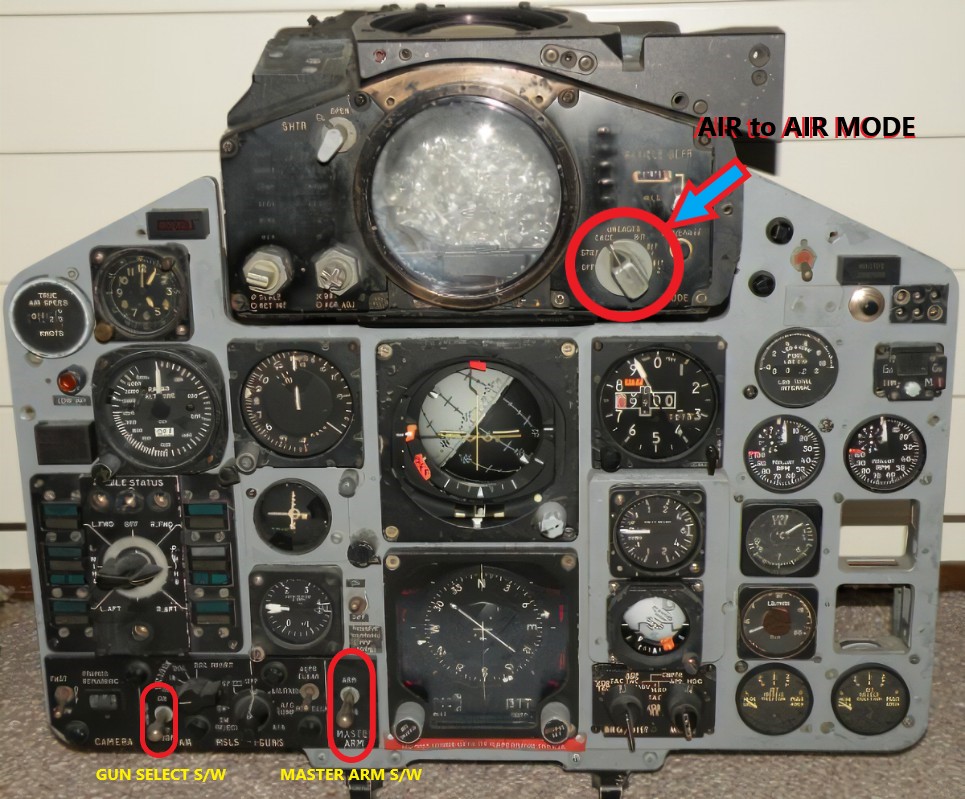
Once selected the gun will fire once the trigger is depressed and there is a stream of yellow tracer in the F 4 Phantom VSN Mod. Like all gunnery it takes practice, so your next step is to climb abord and go practice.
AIR to AIR AIM-9 Sidewinder IR Guided Missile.
The sidewinder missile is a great missile but unlike modern versions like the AIM 9L and latter these should be fired withing a 60-degree cone behind the enemy aircraft for best results. The mod does have AIM 9L so head on shots are possible, so it depends on how Cold War you want to be. That’s your choice when arming the aircraft as its pilot.
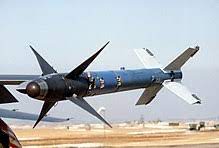
The Aim-9 Sidewinder has an audio tone heard in the headset of the pilot once selected. If selected, you should hear a steady growling telling you the missile is working and looking for targets. It appears you cannot slave the seeker to the radar which is unfortunate. Once you’re behind your target the tone should change to a more frantic tone telling you the missile sees a target.
This is the time to fire but note these missiles should be fired, if possible, when the aircraft is not turning hard. If looking at the aircraft and you can see a lot of the top of the aircraft your aspect could be to high for the missile to maintain a track. The best defence for a missile is to manoeuvre hard and defeated it.

- MASTER ARM – ON
- AIR TO AIR – Gunsight Mode A/A
- Missile Selector Rotate till ONLY the middle lights are ON indicating Sidewinders. (Corners indicate AIM-7 Sparrow)
- Listen for Tone to CHANGE indicating a LOCK!
- Push the Weapon Release Button to Launch.
Air to AIR – AIM-7 Sparrow Semi Active Radar Missile.
The Aim-7 Sparrow was in its infancy back when the F-4 Phantom was on the scene and the powers that be at the time believed whole heartedly the day of the dogfight was over for ever. They were to be proven wrong very quickly and this coast many brave fighter crews their lives!
The AIM-7 is a radar guided missile that requires you keep the target locked until the missile finds its target. If at any time the missile loses the launch donor radar guidance the missile becomes an expensive rocket that flies off and explodes on its own.
Launching an Aim-7 Sparrow requires more work from the pilot and really the Weapons System Officer WSO as they would have operated the radar and locked the target for the pilot. I have found these AIM-7s to be pretty unreliable unless the target gets within 5 NM or so. The possibility of a 10-15 NM kill seems unlikely so far from my tests. I have been flying low, so I need to test some high altitude launches to confirm altitude launches.

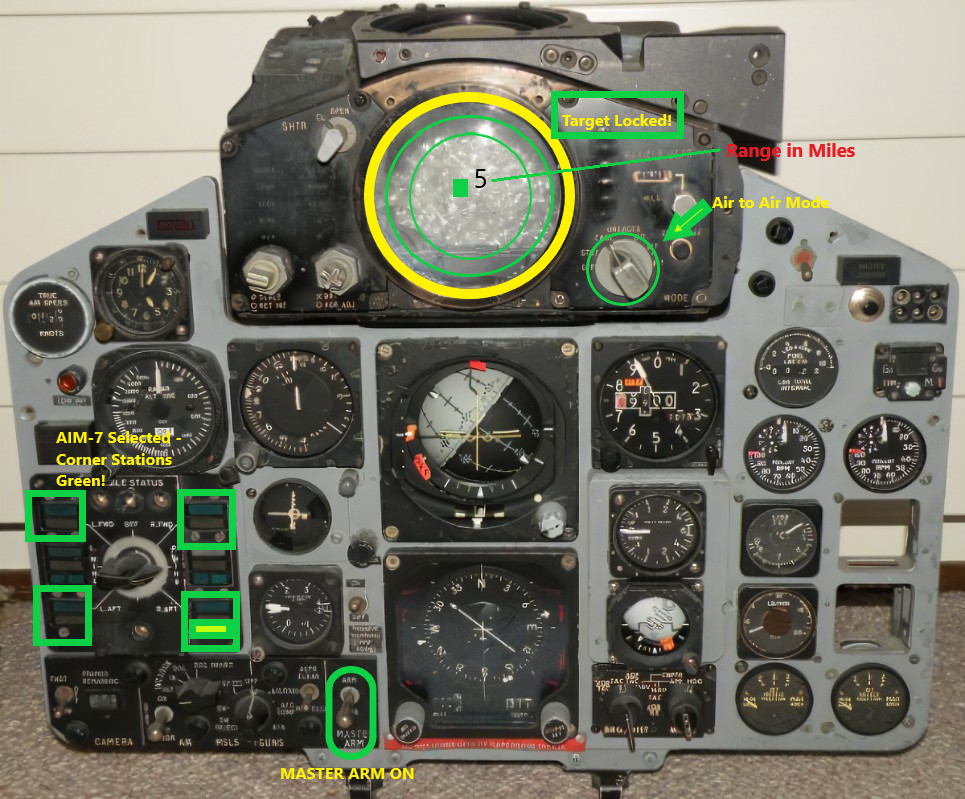
- MASTER ARM – ON
- AIR TO AIR – Gunsight Mode A/A
- Radar Select – ON
- Move Radar Cursor on Radar over the Target (square)
- Lock the Target (Designate Target)
- Missile Selector Rotate till ONLY the Corner Lights or ALL Lights are illuminated. (Corners indicate AIM-7 Sparrow)
- OR
- Missile Selector Rotate until ALL lights are on – AIM-7s will fire first and when expended Sidewinders will follow automatically/
- Keep the target Locked in the centre of the Radar Screen – When the third ring becomes visible LAUNCH keeping the target locked.
- Push the Weapon Release Button to Launch.
Conclusion.
In my opinion this F 4 Phantom Standalone freeware mod from VSN is worthwhile. Its flight model is pretty good but has work needed as spin recovery seems impossible if you lose control. Weapons seem ok for the period needing the conditions to be perfect to get a kill so watch some Vietnam pilot interviews and understand parameters to get kills.
Its certainly hard work but also rewarding to fly. If you keep the speed in the mid to high 400Knot range – Keep the AOA in limits your turn performance is fair but the vertical is your friend with those powerful engines. Enjoy because I certainly am having a ball with this beast!

Author.
Brendon McAliece is a multi-lingual expat who brings over three decades of flight simulator/PC building experience as well as over two decades of real-world jet fighter experience as a weapons/egress technician.
He holds a sport pilot certificate giving him real-world flying experience. His travels have taken him from Europe to the Middle East, Asia and his home of Australia. He has a passion for travel, languages, Flight simulation as well as Guitaring and Coffee. You can read more in his blogs below.
Learn More @ DreamingGuitar.com – DreamingCoffee.com – LetsFlyVFR.com
( HOME – BLOG – SHOP – ABOUT )
As an Amazon affiliate I may benefit from qualifying sales.
